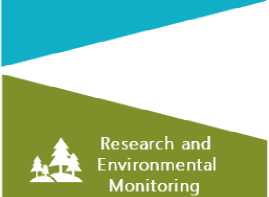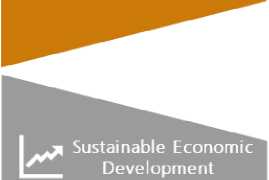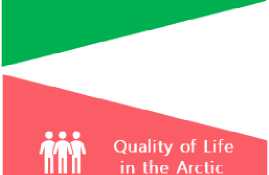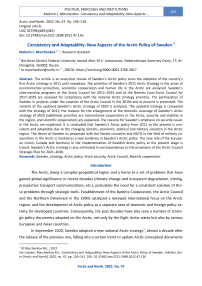Consistency and Adaptability: New Aspects of the Arctic Policy of Sweden
Автор: Marchenkov M.L.
Журнал: Arctic and North @arctic-and-north
Рубрика: Political processes and institutions
Статья в выпуске: 47, 2022 года.
Бесплатный доступ
The article is an analytical review of Sweden’s Arctic policy since the adoption of the country’s first Arctic strategy in 2011 until nowadays. The priorities of Sweden’s 2011 Arctic Strategy in the areas of environmental protection, economic cooperation and human life in the Arctic are analyzed. Sweden’s chairmanship programs at the Arctic Council for 2011–2013 and at the Barents Euro-Arctic Council for 2017–2019 are assessed for compliance with the national Arctic strategy priorities. The participation of Sweden in projects under the auspices of the Arctic Council in the 2010s and at present is presented. The content of the updated Sweden’s Arctic strategy of 2020 is analyzed. The updated strategy is compared with the strategy of 2011; the reasons for the enlargement of the thematic coverage of Sweden’s Arctic strategy of 2020 (additional priorities are international cooperation in the Arctic, security and stability in the region, and scientific cooperation) are explained. The reasons for Sweden’s emphasis on security issues in the Arctic are explained. It is concluded that Sweden’s Arctic policy from 2011 to the present is consistent and adaptable due to the changing climatic, economic, political and military situation in the Arctic region. The desire of Sweden to cooperate with the Nordic countries and NATO in the field of military cooperation in the Arctic is marked as a new tendency in Sweden’s Arctic policy. The new role of the European Union, Canada and Germany in the implementation of Swedish Arctic policy at the present stage is traced. Sweden’s Arctic strategy is also estimated in correspondence to the provisions of the Arctic Council Strategic Plan for 2021–2030.
Sweden, strategy, Arctic policy, Arctic security, Arctic Council, Barents cooperation
Короткий адрес: https://sciup.org/148324400
IDR: 148324400 | УДК: 327(98)(485)(045) | DOI: 10.37482/issn2221-2698.2022.47.126
Текст научной статьи Consistency and Adaptability: New Aspects of the Arctic Policy of Sweden
The Arctic, being a complex geopolitical region and a home to a set of problems that have gained global significance in recent decades (climate change and ecosystem degradation, mining, prospective transport communications, etc.), postulates the need for a consistent solution of these problems through strategic tools. Establishment of the Barents Cooperation, the Arctic Council and the Northern Dimension in the 1990s catalyzed a renewed international focus on the Arctic region, and the development of Arctic policy as a separate area of domestic and foreign policy activity for developed countries. Consequently, the past decades have also seen a number of strategic policy documents adopted on the Arctic, not only by the Eight Arctic states but also by various European and Asian countries.
In September 2020, Sweden adopted a new national Arctic strategy1, almost a decade after the release of the previous one, falling into a certain trend to update Arctic conceptual documents
-
∗ © Marchenkov M.L., 2022
among neighboring countries. In October 2020 (in continuation of the principles of state policy in the Arctic adopted at the beginning of 2020 2) Russia approved a new strategy for the development of the Arctic zone 3, traditionally mostly focused on aspects of the development of its own Arctic territories, but taking into account international challenges in the region. In addition, at the end of 2020 (just three years after the release of the previous concept paper on the Arctic 4) Norway issued an updated concept of the Arctic policy 5, encapsulating both foreign policy activities in the Arctic region and domestic development priorities in northern Norway in one strategic document. Also, although the Finnish government adopted the updated Arctic strategy later than Sweden 6, in summer 2021, it is important to emphasize that the actual updating of Finland’s Arctic policy was done in spring 2017, when the country entered into a two-year chairmanship of the Arctic Council.
Undoubtedly, since the release of Sweden’s previous Arctic strategy in 2011, the problems of international politics in the Arctic region and its surroundings have changed significantly. The Crimean events of 2014 triggered a chain of mutual sanctions between Russia and Western countries. Few European Union countries were not affected by the social problems caused by the European migration crisis that started in 2015. The turbulence of internal European integration processes culminated in Brexit. New challenges to international security and the special position of the United States towards NATO in recent years have provoked a new configuration of forces and priorities within the North Atlantic Alliance [1, Sauer T., p. 215; 2, Koivula T., pp. 157–158]. Finally, globalization in the region was driven by scientific evidence of deterioration of the environment in the Arctic due to negative consequences of climate change [3, Box J.E. et al.]. All these circumstances (together with the Arctic policy of the European Union, which acquired more and more conceptualized forms during the 2010s) influenced the content of the new Swedish strategic document on the Arctic.
Arctic Strategy 2011 and its implementation
Compared with many other northern European countries, Sweden issued its first Arctic strategy later, in May 2011 7; thus, it can be noted that this document can be considered as a response to the previously published positions of other European state actors in the Arctic region. Moreover, shortly before that, in 2008-2011, political statements in relation to the Arctic were presented in official documents of the EU governing bodies: the EU Council of Ministers 8, the European Commission 9 and the European Parliament 10. Thus, Sweden, being a member of the European Union, was able to strengthen its position, including the interests of this supranational institution, in its first Arctic strategy (looking ahead, the EU’s role in the implementation of Swedish Arctic policy was not clearly defined and fragmented in the text of this document).
The priorities of Sweden’s Arctic policy included environmental and climate change (environmental protection, biodiversity, and research), economic growth (implementation of the commercial and industrial potential of Northern Europe and the Arctic region as a whole), human life in the Arctic (health and demography, indigenous peoples). This set of policy directions in the Arctic generally corresponded to the range of development issues for the region previously set by other Arctic countries. The thematic areas of the Swedish Arctic Strategy 2011 are detailed in the figure 1.

ENVIRONMENT
• Research and practical solutions to mitigate the effect of the climate change for environment and people
• Environment management based on the sustainability approach to the biodiversity ofthe Arctic flora and fauna
• Reducing emissions of greenhouse gases, mercury, persistent organic compounds and other pollutants into the environment
• Monitoring and assessment ofthe state ofthe Arctic ecosystems


• Seeking for barrier-free trade between the Arctic states
-
• Ensuring integrated safety of shipping in the Arctic
-
• Promotion of national economic interests through external trade missions

^Ц^ HUMAN IN THE ARCTIC
• Combating negative effects ofthe climate change for social issues and human health
• Ensuring youth representation and gender equality in the Arctic policy
• Comprehensive support of Indigenous peoples in the Arctic (including indigenous culture, language, economy, and political representation)
• Promotion of human dimension in the Arctic through international cooperation

• Development of the concept of sustainable development in the Arctic, including energy and mining sectors

Fig. 1. The main directions of Sweden’s activities in the Arctic (according to the Arctic strategy 2011) 11
The foreign policy plans outlined in the strategy were mainly presented by the message that the Arctic should remain a friction-free area. To fulfill this goal, it was supposed to use the negotiating potential of the already established Arctic cooperation platforms: the Arctic Council and the Barents Cooperation. Plans were also announced for the implementation of the Arctic cooperation track within international structures of a broader thematic focus: the Nordic Council, the European Union, the United Nations, as well as through the interaction of the Saami parliaments of Norway, Finland and Sweden with the participation of observers from the Russian Saami.
The two-level system of cooperation in the Barents region was considered as a platform for the implementation of the priorities set out in the strategy in the field of the environment, economic relations and human life in the Arctic. Through activities within the Nordic Council, Sweden intended to support the projects of the Arctic Council and the Barents Cooperation via initiatives funded by the Nordic Council of Ministers aimed at the development of the Arctic territories. The strategy also emphasized the negotiating capacity of UN structures in the areas of Arctic territorial disputes, environmental protection, climate policy, health and indigenous peoples. In relation to the work of the Arctic Five, Sweden, on the contrary, proposed to stop using such a negotiation format, expanding the Arctic Eight agenda and legitimizing the position of Iceland, Finland and Sweden in this matter (by that time, the coastal countries of the Arctic had already held two ministerial meetings in 2008 and 2010, confirming their common position on territorial claims in the Arctic) [4, Koptelov V.V., p. 193].
Particular emphasis in the implementation of Sweden’s international Arctic policy was placed on strengthening the political and institutional role of the Arctic Council, which was, on the one hand, in line with the general trend of Arctic cooperation shared by most countries in the region, and, on the other hand, was very timely, given the Swedish chairmanship in 2011–2013. It is important to note that the Swedish strategy, while seeking to strengthen the potential for cooperation in the fields of economic activities and social issues, also proposed to consider expanding the mandate of the Arctic Council to include collective security issues 12, but in practice this proposal was not implemented.
The Swedish chairmanship program for 2011-2013 proposed three blocks: environment and climate, people in the Arctic, and the strengthening of the Arctic Council 13. The thematic priorities within these blocks generally reflected the corresponding issues in the Swedish Arctic strategy. Thus, the thematic continuity of the agenda of the Swedish Arctic Council Chairmanship with the national Arctic strategy can be noted, with the proviso that economic cooperation is not identified as a separate block; however, this topic was disclosed through an emphasis on responsible environmental management, as well as an approach to shipping and mining in the Arctic, which meets the concept of sustainable development.
Several notable projects during the Swedish Chairmanship can be mentioned. The Working Group on the Arctic Monitoring and Assessment Program (AMAP) has released a report on the acidification of the Arctic Ocean. The Emergency Prevention, Preparedness and Response (EPPR) Working Group developed initiatives aimed at preventing oil spills. The Arctic Biodiversity Assessment project was carried out by the Working Group on the Conservation of Arctic Flora and Fauna (CAFF). The Working Group on the Protection of the Arctic Marine Environment (PAME) has released an overview of the state of ecosystems in the Arctic Ocean, and proposed developments on the use of an ecosystem approach in project management in the Arctic The Sustainable Development Working Group (SDWG) proposed corporate social responsibility and corporate sustainability projects, Arctic public health initiatives, and a program on adaptation of Arctic communities to changing environmental conditions. The Arctic Contaminants Action Program (ACAP) implemented a project to combat furan and dioxin emissions at Russian industrial enterprises, as well as to improve storage conditions for obsolete pesticides in the North of Russia (most of the projects of this working group were implemented in Russia) 14. The negotiating potential of Arctic cooperation was realized in the form of 16 high-level meetings, among them the meeting of the Eight Arctic States Environment Ministers in February 2013 (with the participation of representatives of indig-
POLITICAL PROCESSES AND INSTITUTIONS
Maksim L. Marchenkov. Consistency and Adaptability: New Aspects … enous peoples), as well as the meeting with representatives of the Council Nordic Ministers, the Council of the Baltic Sea States and the Council of the Barents Euro-Arctic Region in March 2012
Thus, we can conclude that the Swedish chairmanship of the Arctic Council was able to implement the set thematic priorities and was successful. Not surprisingly, the points raised by Swedish Foreign Minister Carl Bildt at the Kiruna ministerial meeting were devoted to the problems of climate change and the global significance of their consequences, measures to develop economic ties in the Arctic and the institutional development of the Council 15. The ministerial meeting also adopted a joint statement “Vision for the Arctic”. This document proposed to the participants of the Arctic Council the implementation of such areas as the priority of peaceful cooperation in the region, environmental protection, improving the quality of life of the population of the Arctic (including indigenous peoples), sustainable economy and environmental management, scientific and educational cooperation, issues of integrated security in the Arctic, as well as strengthening the role of the Arctic Council as a leading forum for the Arctic dialogue 16. Thus, Sweden was able to ensure that its national Arctic priorities were transferred into the international agenda of the Arctic dialogue already beyond the period of its chairmanship of the Arctic Council.
It is noted that, in general, the Sweden’s Arctic policy after 2013 continued in a similar thematic tracks [5, Eklund N.]. Projects under the Arctic Council that were initiated after the Swedish chairmanship, and in which Sweden was or continues to be one of the executors, demonstrate the country’s commitment to previously selected thematic priorities in the Arctic activities: environmental protection 17, sustainable development 18, social issues 19.
The Barents Euro-Arctic Council Chairmanship in 2017-2019 can be seen as a step in the progressive renewal of Sweden's Arctic policy agenda. An analysis of the chairmanship program shows that the Barents cooperation priorities proposed by Sweden for this period were a steady continuation of the thematic priorities of the national Arctic strategy, taking into account the regional dimension of the BEAR. In the proposed program, issues of environmental protection were closely intertwined with the climate agenda, aspects of economic cooperation were related to issues of integrated security and sustainability (including the need to develop sustainable tourism), and the social sphere covered the problems of healthcare, academic mobility , cultural coopera- tion and youth involvement. It can also be noted that the Swedish chairmanship intended to make the Barents region more visible on the map of international Arctic partnerships through strengthening communication and streamlining structures within the Barents cooperation 20. Having considered the results of the Swedish chairmanship in the BEAR, it can be summarized that the activities within the framework of the Barents cooperation during this period corresponded to the priorities outlined in the program. Separately, it can be noted that significant progress has been made in some areas: in particular, in 2019, comprehensive recommendations on the involvement of young people in the work of the Barents cooperation structures were issued; in 2019, a meeting of the ministers of transport of the BEAR countries approved the updated Joint Transport Plan for the Barents Region 21.
Thus, we can conclude that for almost ten years since the adoption of the first Arctic strategy, Sweden has consistently implemented the policy directions outlined in the document. Projects in the field of environmental protection, improving the quality of life in the Arctic, sustainable economic development during this period remained in the focus of attention and activity of Sweden, both during its chairmanship of the Arctic Council and the Council of the Barents EuroArctic Region, and in the intermediate stage. Sweden also strengthened the communication and organizational components of these structures during its presidency. Nevertheless, the changed situation in the Arctic region on several fronts made it necessary to adopt an updated national policy document on the Arctic.
An updated look at current challenges
The new Swedish Arctic strategy 22 was released in September 2020 by the Ministry for Foreign Affairs, emphasizing the focus of the document on the country’s foreign policy activities in the Arctic region. As we noted, updating the Arctic conceptual documents has become a definite trend in 2019–2021; in particular, Arctic policy concepts were revised in Canada 23 and Germany 24 in 2019 and Russia approved a renewed Arctic public policy framework in early 2020, which would have an impact on the range of issues raised by the strategy and the tools for implementing Swedish Arctic policy.
Thus, the priorities of the new Swedish Arctic Strategy included international cooperation in the Arctic, ensuring security and stability in the region, climate policy and environmental protection, Arctic research (with emphasis on ecosystem monitoring), sustainable economic development and improving the quality of life of the Arctic population. The areas of the renewed Arc- tic policy in Sweden are shown in more detail in the figure 2.



-
• P ria rity of the A retie co о p eratio n
and strengthening of the Arctic Council's core role in this field
-
• Development of the Barents cooperation and the Arctic direction in the Nordic cooperation
-
• Supporting EU's Sustainable development policy in the Arctic
-
• Representation of indigenous peoples, women and youth in the Arctic policy
-
• Commitment to the international rule-based order
-
• Maintaining peace and stabiity through international cooperation
-
• Development of security and defense cooperation in the Arctic through various means (NATO, EU, Nordic Council, etc.)
-
• Strengthening national military response capabilities in the Arctic
-
• Countering the influence of destabilizing the Arctic from outside the regbn
-
• Assistance in resolving emergencies in the Arctic
-
• Strengthening the role of the Arctic Council in environmental and climate issues
-
• Implementation of the Paris Agreements in the Arctic
-
• Ensuring biodiversity and sustainable use of bioresources in the Arctic
-
• Sustainable land and water management
-
• Combating chemicals, waste and radioactive particles pollution in the Arctic region



-
• International research cooperation development in the Arctic (including climate research)
-
• Expanding environmental research and ecosystem monitoring activities in the Arctic
-
• Promotion of indigenous knowledge utilization in traditional science
-
• Seeking to further conducting of Sweden's own marine research on dim ate-neutral vessels
-
• Support of sustainable trade, investment and transport in the Arctic
-
• Implementing sustainable approaches in the mining industry
-
• Implementation of the Sustainable Development Goals, the EU Green Deal and the Green Transition in the Arctic
-
• Support IMO activities to reduce greenhouse gas emissions in the Arctic
-
• Infrastructure devebpment in the Arctic (including digital
infrastructure)
-
• Improving the quality of life of the Arctic youth
-
• Supporting of reindeer husbandry as vital part of the indigenous peoples' economy
-
• Promotion of indigenous peoples' culture and lifestyle
-
• Development of the Sami language and other Arctic indigenous peoples' languages
-
• Gender equality in the Arctic

• Seeking to remove trade barriers in the Arctic region

Fig. 2. Priorities of the Arctic policy of Sweden (according to the Arctic strategy 2020) 25

Despite the seeming balance between domestic and foreign policy objectives within the strategy, it should be noted that despite the double increase of the number of priority topics in the new Swedish Arctic strategy document, the substantive focus of these priorities is roughly the same as in the previous strategy. Thus, Arctic cooperation and security issues in the region (pre-
-
25 Source: author’s development based on the Swedish Arctic Strategy 2020.
sented in the 2011 Strategy in a separate section of the document) were transformed and included as separate priorities in the 2020 Strategy. In addition, the need for research on a wide range of Arctic issues, including environmental, economic and social concerns, was already highlighted in the 2011 strategy under the respective priorities; however, this priority deserved separate attention in relation to the need to implement the Agreement on Strengthening Arctic International Scientific Cooperation 26, signed under the auspices of the Arctic Council.
However, it cannot be concluded that Sweden’s new Arctic strategy duplicates its previous version. The arguments for each selected priority are supported by updated data on the state of problems in this area. In addition, the updated political document reveals a more comprehensive overview of the potential for international (both multilateral and bilateral) cooperation and security policy. Let us consider the factors that have contributed to the focus on these areas.
Security and cooperation in the Arctic. New roles for partnerships and partners
The focus on security issues traditionally prescribed by the Swedish government (including in the Arctic region) is not a research stereotype. As early as the 2011 strategy pointed out, security in the Arctic was already an issue in Sweden during the Cold War and the overarching goal of the country’s Arctic policy was to achieve a state of security in the region through the implementation of identified economic, environmental and social priorities 27. The updated Arctic strategy also retains the general principle of implementing the country’s activities through the prism of ensuring security in the Arctic. However, this policy document takes a more varied view of security issues, complementing the concept of “hard” threats with responses to human security challenges (implementation of human capital and securing its component) 28.
The reason why Sweden has focused so much attention on security issues in the Arctic region is the set of circumstances that became more relevant in the 2010s. Climate change in the Arctic not only affects the degradation of local ecosystems, but also triggers natural disasters, rising sea levels, and other global impacts [6, Palosaari T., Tynkkynen N., p. 91]; these circumstances cause risks for the life of northern communities. In addition, climate change in the Arctic opens up additional opportunities for the economic exploitation of the region: minerals, animal and plant resources of the Arctic become more accessible for extraction, the navigation period of Arctic shipping increases [7, Crépin A.-S., Karcher M., Gascard J.-C.]. It is important to note that due to easier access to hydrocarbon deposits in the North, the situation in the global energy market may
POLITICAL PROCESSES AND INSTITUTIONS
Maksim L. Marchenkov. Consistency and Adaptability: New Aspects … change significantly, but the risks of environmental problems grow due to potential oil spills, increased shipping volumes and other related reasons.
The growth of the economic attractiveness of the Arctic resources also causes an increase in the interest of non-Arctic countries and transnational corporations in the region. Notably, the Swedish Chairmanship of the Arctic Council at the Kiruna ministerial meeting resulted in the granting of observer status to five Asian countries, as well as Italy (seven countries were granted observer status during the 2010s). Thus, the geopolitical situation in the Arctic is gradually changing as a result of the inclusion of new legitimate actors in Arctic politics.
The consistent expansion of the military presence of Russia and NATO forces in the region in recent years [8, Sergunin A.] determines the presence of statements about the country’s aspirations for military cooperation in the Arctic through NORDEFCO (which is natural due to the importance of the Nordic Council for Sweden) and NATO (which is a necessity, given the membership of a number of Arctic countries in the alliance) [9, Voronov, K.V., p. 36–37]. Taking into account the country’s traditional policy of neutrality, the explicit emphasis on military cooperation in the Arctic in the strategic document is a novelty in the Swedish Arctic policy. It can be noted that the events outside the Arctic region, including the Crimean crisis and the chronic conflicts between Sweden and Russia related to crossing the state border in the Baltic region, also contributed to the strengthening of military rhetoric in the text of the updated strategy. It should also be emphasized that Sweden’s political issues on Arctic security may have been influenced by the Arctic strategies of the armed forces in the US and France 29.
Thus, given the range of security challenges presented in the Arctic region, it is clear that the main tool Sweden relies on in Arctic policy is the consolidation of its position with other friendly countries. It goes without saying that in multilateral cooperation formats, this direction will mainly be reflected in the coordination of Sweden’s Arctic policy with other members of the Nordic Council. In bilateral relations, the United States plays a key role in ensuring security in the Arctic for Sweden. This approach was outlined in the 2011 strategy and continues in the 2020 update.
The role of the European Union in Sweden’s Arctic policy has also evolved. Thus, in addition to the previously declared desire of Sweden to implement the provisions of the common foreign and security policy of the EU in the Arctic region, a new thesis about the European Union as one of Sweden’s strategic partners in the national Arctic policy has appeared. In addition, the Swedish government intends to support the EU’s plans to join the Arctic Council as an observer. Given these circumstances and the recent exit of the UK (a country with its own Arctic policy) from the European Union, it seems that the EU will try to strengthen the implementation of its Arctic policy through Sweden. At the same time, a separate question arises: can the economy of Northern
Sweden, which depends, among other things, on the forestry and mining industries, fully fit into the new EU carbon neutrality policy?
Sweden’s updated Arctic strategy makes Canada and Germany strategic partners in its Arctic policy. With Canada, Sweden expects to strengthen cooperation within the framework of the Arctic Council. Germany is attractive to Sweden as a strategic partner, since both countries share a commitment to the rule of law in world politics, have similar defense policy positions and advocate for the implementation of the sustainable development agenda.
Speaking about the role of partnerships in Swedish Arctic policy, one cannot but touch upon the issue of the updated status of the Arctic Council in connection with the adoption of the Strategic Plan of the Arctic Council for 2021-2030 at the ministerial session in Reykjavik in May 2021 30. The introduction of the first of its kind long-term guidance for action for this international structure is crucial because, in expanding on the ministerial declarations (which evaluated the progress of the Arctic Council during the past two years and endorsed the working groups' plans for the coming years), the plan sets the direction for substantive cooperation among council participants over a ten-year period.
The Strategic Plan proposes the implementation of a series of measures to achieve seven strategic goals in the Arctic, covering the areas of climate change, the state of ecosystems and biodiversity, sustainable social and economic development, knowledge sharing and strengthening the Arctic Council. It is reasonable to assume that the practical implication of the adoption of such a strategic document under the auspices of the Arctic Council is that legitimate activities in the Arctic (of both Arctic and non-Arctic actors) will henceforth be considered those that take into account the provisions of this strategic plan. In this context, the current priorities of Sweden’s Arctic policy (whether climate and sustainable development or Arctic research issues) are reflected in every goal set in the strategic plan of the Arctic Council. In particular, it can be noted that in its national Arctic strategy, Sweden also emphasized the need to strengthen the role and influence of the Arctic Council, thereby creating prerequisites for strengthening the institutional component of the security system in the Arctic.
Conclusion
The strategic documents and the implementation of Sweden’s policy in the Arctic have created a certain image of a country which, on the one hand, is a participant in various formats of Arctic cooperation, and, on the other hand, is strongly committed to ensuring national security in the Arctic region. While these political vectors are not opposing, the Swedish government is regularly faced with the dilemma of Arctic cooperation: how can one consistently implement measures to improve the state of the international Arctic region and at the same time fully cooperate with
(potential) rivals among other Arctic countries (for example, Russia) or other countries present in the Arctic (e.g. China)?
Since the adoption of the new Arctic strategy, which confirmed the previously selected priorities of the national Arctic policy, Sweden continued to implement its activities in the Arctic in the same way. Thus, through the Arctic Council, Sweden continues to participate in the implementation of projects that correspond to the priorities of the new Arctic strategy 31. Furthermore, the Swedish region of Västerbotten, despite the Covid-19 pandemic, successfully implemented the Barents Regional Council chairmanship program in 2019 – 2021 in close cooperation with Norway (as chair of the Barents Euro-Arctic Council); at a council meeting in October 2021 in Tromsø, the governor of Västerbotten, H.H. Knutsson very kindly handed over the chairmanship to the Governor of the Nenets Autonomous Okrug Yu.V. Bezdudniy.
Thus, we can state that, despite the periodic changes of power in the national government, the strategic priorities and implementation of the Arctic policy of Sweden have been maintained and have been able to adapt to the external conditions changes during the 2010s. At the current stage of the global Arctic dialogue, we can characterize Sweden as a moderate Arctic conservative, true to its basic principles, but ready to adjust the chosen settings due to the general change in the Arctic system. An example of such an adjustment is the strengthening of the role of the European Union in the country’s Arctic policy. For example, Sweden earlier contributed to the formation of the EU Arctic agenda and generally supported the Arctic vector of EU policy [10, Biedermann R., p. 179], but was not an agent of its direct implementation. Today, Sweden considers itself as a more active representer of the EU’s Arctic priorities.
The 2011 Arctic Strategy highlighted the similarities between Sweden’s and Finland’s positions on many Arctic policy issues. However, it is worth mentioning that during the 2010s, Finland’s Arctic activities have transformed towards leadership in certain areas related to the economy and innovation in the Arctic. In the new strategy, Sweden is setting similar goals, aiming to become a leader in smart investments and innovative mining solutions in the Arctic 32.
It is also necessary to note a certain thematic harmony between the priorities of the Arctic strategy of Sweden and the goals of the Strategic Plan of the Arctic Council for 2021 – 2030, showing the potential for Swedish commitment to the Arctic Council as a key element in the region’s security.
It is noteworthy that for all Sweden’s concern about security issues, for some reason, the current Arctic strategy does not pay attention to such an important tool of “soft power” in foreign policy as the formation of a regional identity. Moreover, this direction is one of the strategic prior- ities of the Council of the Baltic Sea States 33 and can be traced within the framework of the Barents cooperation [11, Cambou D., Heninen L., p. 20–22]. In addition, Sweden de facto uses some of the “soft power” tools in its foreign policy towards other Arctic countries. These include the Swedish Institute (geographically focused on the European countries of the post-Soviet states and Poland), which supports projects in the areas of civil society, innovation, security, regional development, energy, environmental protection, healthcare and the social sphere 34. There is also the Swedish-Karelian Information Business Center, which organizes regional cooperation projects between Västerbotten and the Republic of Karelia and actively cooperates with the Nordic Council of Ministers (in recent years, it has also been implementing projects in the field of cultural exchange, social issues, sustainable development, natural resource and waste management, promotes nonprofit organizations working in the fields of culture, education and information 35).
There are also some questions over the implementation of Sweden’s Arctic policy from 2020. The ministerial meeting of the Council of the Barents Euro-Arctic Region, held on 26 October 2021 in Tromsø, brought together all the foreign ministers of the key countries of the BEAR, except for Ann Linde, who was participating in a NATO seminar in Stockholm that day and sent her deputy 36. This choice of the Swedish Ministry of Foreign Affairs, however, also fits into the Swedish concept of ensuring security in the Arctic through various formats of cooperation.
It also should be noted that the ambitious and obvious task for the Swedish Arctic policy to propose a collective instrument for negotiations on military presence and security in the Arctic was not a priority in the new national Arctic strategy. This range of issues (important for the geopolitical situation in the Arctic) was not included in the plan of the Arctic Council for the next decade. Therefore, at the present stage, Sweden will probably not change its standpoint in the disposition of the Arctic countries, consistently adhering to the previously selected priorities.
Список литературы Consistency and Adaptability: New Aspects of the Arctic Policy of Sweden
- Sauer T. Rough Times Ahead for NATO. In: Security and Defence in Europe. Advanced Sciences and Technologies for Security Applications. Ed. by J.Ramírez, J. Biziewski. 2020, pp. 245–254. DOI: 10.1007/978-3-030-12293-5_18
- Koivula T. Carry That Weight: Assessing Continuity and Change in NATO’s Burden-Sharing Disputes. Defense & Security Analysis, 2021, no. 37 (2), pp. 145–163. DOI: 10.1080/14751798.2021.1920092
- Box J.E., Colgan W.T., Christensen T.R. et al. Key Indicators of Arctic Climate Change: 1971–2017. Environmental Research Letters, 2019, no. 14 (4). 045010. DOI: 10.1088/1748-9326/aafc1b
- Koptelov V.V. Arkticheskaya strategiya Shvetsii [Arctic Strategy of Sweden]. In: Arkticheskiy region: Problemy mezhdunarodnogo sotrudnichestva [Arctic Region: Problems of International Coopera-tion]. Moscow, Aspect Press, 2013, vol. 1, pp. 191–196. (In Russ.)
- Eklund N. The Swedish Chairmanship: Foresight and Hindsight in Arctic Activism: Methods and Pro-tocols. Leadership for the North. Ed. by D.S. Nord. 2019, pp. 71–88. DOI: 10.1007/978-3-030-03107-7_5
- Palosaari T., Tynkkynen N. Arctic Securitization and Climate Change. Handbook of the Politics of the Arctic. Ed. by L.C. Jensen, G. Hønneland. 2015, pp. 87–104. DOI: 10.4337/9780857934741.00013
- Crépin A.-S., Karcher M., Gascard J.-C. Arctic Climate Change, Economy and Society (ACCESS): Inte-grated Perspectives. Ambio, 2017, no. 46, pp. 341–354. DOI: 10.1007/s13280-017-0953-3
- Sergunin A. Thinking about Russian Arctic Council Chairmanship: Challenges and Opportunities. Po-lar Science, 2021, vol. 29, 100694. DOI: 10.1016/j.polar.2021.100694
- Voronov K.V. Severnye strany i Rossiya: «neprikosnovennyy zapas» prochnosti dvustoronnikh otnosheniy [The Nordic Countries and Russia: an Untouchable Reserve of Strength to Maintain Bi-lateral Relations]. Sovremennaya Evropa [Contemporary Europe], 2021, no. 1, pp. 33–40. DOI: 10.15211/soveurope120213340
- Biedermann R. Adapting to the Changing Arctic? The European Union, the Nordics, and the Barents Governance Mosaic. Journal of Contemporary European Studies, 2020, no. 28, pp. 167–181. DOI: 10.1080/14782804.2019.1693352
- Cambou D., Heninen L. The Barents Region, a Society with Shared Security Concerns in the Arctic. Society, Environment and Human Security in the Arctic Barents Region. Ed. by K. Hossain, D. Cam-bou. 2018, pp. 19–34. DOI: 10.4324/9781351171243


